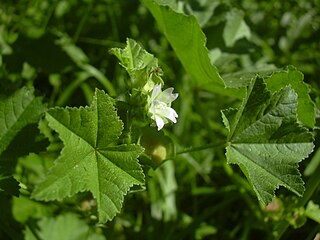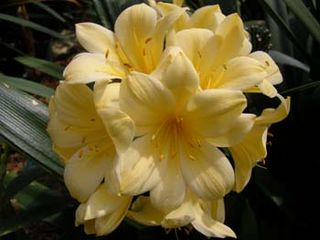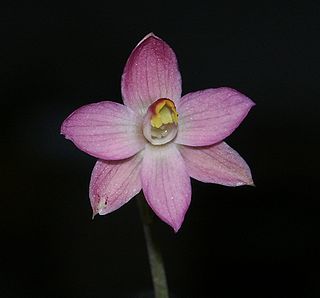
Begonia is a genus of perennial flowering plants in the family Begoniaceae. The genus contains more than 2,000 different plant species. The Begonias are native to moist subtropical and tropical climates. Some species are commonly grown indoors as ornamental houseplants in cooler climates. In cooler climates some species are cultivated outside in summertime for their bright colorful flowers, which have sepals but no petals.

Gymnadenia conopsea, commonly known as the fragrant orchid or chalk fragrant orchid, is a herbaceous plant of the family Orchidaceae native to northern Europe.

Dactylorhiza fuchsii, the common spotted orchid, is a species of flowering plant in the orchid family Orchidaceae.

Gymnadenia is a genus of flowering plants in the orchid family (Orchidaceae) containing 22 terrestrial species. The former genus Nigritella is now included in Gymnadenia.

Malvaceae, or the mallows, is a family of flowering plants estimated to contain 244 genera with 4225 known species. Well-known members of economic importance include okra, cotton, cacao, roselle and durian. There are also some genera containing familiar ornamentals, such as Alcea (hollyhock), Malva (mallow), and Tilia. The genera with the largest numbers of species include Hibiscus, Pavonia, Sida, Ayenia, Dombeya, and Sterculia.

Clivia is a genus of monocot flowering plants native to southern Africa. They are from the family Amaryllidaceae, subfamily Amaryllidoideae. Common names are Natal lily or bush lily.

Leptotes, abbreviated Lpt in horticultural trade, is a genus of orchids formed by nine small species that grow in the dry jungles of south and southeast Brazil, and also in Paraguay or Argentina. They are small epiphytic plants of caespitose growth that sometimes resemble little Brassavola, as they share the same type of thin terete leaves, though they are more closely related to Loefgrenianthus.

Lasiommata petropolitana, the northern wall brown, is a butterfly species belonging to the family Nymphalidae. It can be found in large parts of Europe, from the Pyrenees and Alps up to Scandinavia and Finland, east to Russia and Siberia.

Gymnadenia corneliana is a species of orchid with light-pink petals, found only in the Southwestern Alps in a small region near the France-Italy border. It was first catalogued by Swiss botanist Gustave Beauverd. Some specimens of this orchid display slightly darker petals, although this is uncommon. This flower, like many orchids in its genus, is said to emit a pleasant odor resembling that of vanilla.

Thelymitra rubra, commonly called the salmon sun orchid or pink sun orchid, is a species of orchid endemic to southeastern Australia. It has a single thin, grass-like leaf and up to five salmon pink flowers with broad, toothed arms on the sides of the column. It is similar to T. carnea but the flowers are larger and the column arms are a different shape.

Gymnadenia × chanousiana, common name Chanous' gymnadenia, is a natural hybrid between Gymnadenia conopsea and Nigritella rhellicani.

Gymnadenia rhellicani is a European species of orchid.
Cymbula sanguinans, the giant pinkray limpet, is a species of giant limpet, a marine mollusc in the family Patellidae. It is native to the coast of South Africa. At one time thought to be a subspecies of Cymbula miniata, molecular analysis has shown C. sanguinans warrants being treated as a full species, despite there being no obvious morphological differences between the two. This makes difficult the task of deciding which of the previous research studies refer to C. sanguinans, and which refer to C. miniata.

Nigritella archiducis-joannis is a species of orchid endemic to a few locations in Totes Gebirge, the Dachstein, the Karawanken, the Koralpe – that is the Austrian states Styria, Upper Austria, Salzburg und Carinthia – as well as Triglav National Park.

Gymandenia stiriaca, the Salzkammergut vanilla orchid, is a species of orchid endemic to Austria.

Gymandenia lithopolitanica, the Austrian gymnadenia, is a species of orchid endemic to a portion of the eastern Alps spanning Austria and Slovenia.

Gymandenia miniata is a species of orchid native to the Eastern Alps and Carpathian Mountains. It is similar in appearance to Gymnadenia bicolor; both species were split from a former less defined taxon Nigritella rubra which referred to all red flowering Gymnadenia.

Gymandenia hygrophila is a species of orchid occurring in the southeastern Alps in Italy and Austria.

Gymnadenia dolomitensis is a species of orchid found in the Dolomites mountain range of Italy.
Gymnadenia minor is a species of orchid endemic to Austria.


















